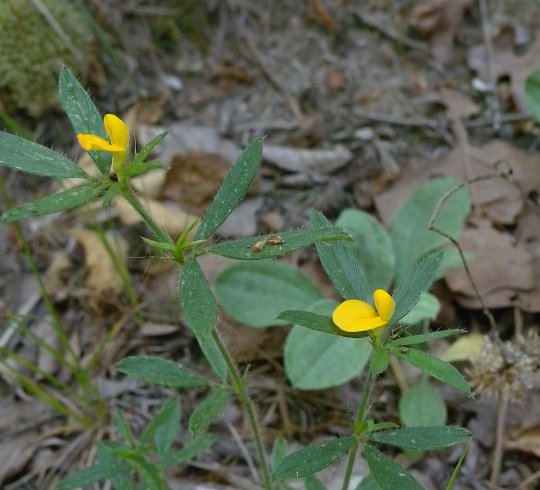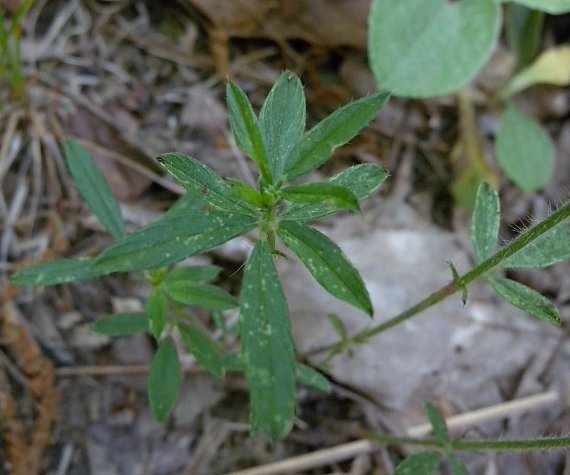
The blooming period occurs from late spring to late summer, lasting about 1½-3 months. Only a few flowers are in bloom at the same time. The flowers are replaced by small seedpods consisting of two segments: the first segment is infertile and stipe-like in shape, while the second segment contains a single seed. The root system consists of a taproot. This plant spreads by reseeding itself.
Cultivation: The preference is full or partial sun, mesic to dry conditions, and a somewhat acidic infertile soil where there is reduced competition from other kinds of ground vegetation.
Range & Habitat: The native Pencil Flower is fairly common in southern Illinois, while in the rest of the state it is rare or absent (see Distribution Map). Illinois lies along the northern range limit of this species. Habitats consist of upland rocky woodlands, bluffs, upland savannas, sandstone glades, prairies, and fields. Pencil Flower occurs in both higher quality natural areas and disturbed areas, especially where sandstone is close to the ground surface.

Faunal Associations: The flowers of Pencil Flower are cross-pollinated primarily by bees (Robertson, 1929). This is one of the host plants of a leaf beetle, Sumitrosis ancoroides. The foliage is highly palatable to hoofed mammalian herbivores (Banta & Thro, 1995).
Photographic Location: An upland rocky woodland in southern Illinois.
Comments: Because it produces relatively few flowers at the same time and it is relatively small in size, Pencil Flower is fairly easy to overlook. It can be distinguished from similar species in the Bean family by the shiny veins on its leaves, stipules with beak-like ciliate tips, and asymmetrical seedpods (a narrow infertile segment followed by a broader fertile segment). There is some variability of this species across its range in regards to the hairiness of its stems, the erectness of its stems, whether flowers are produced individually or in small groups, etc. At the present time, these are regarded as variations of a single polymorphic species.